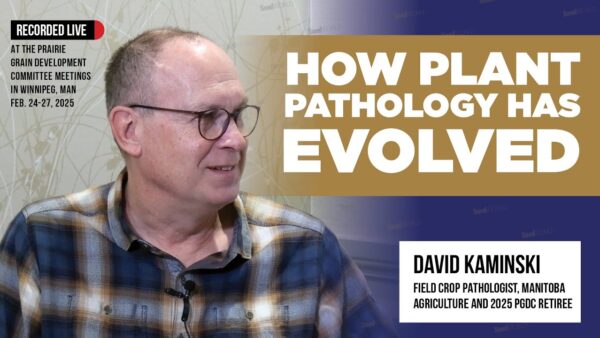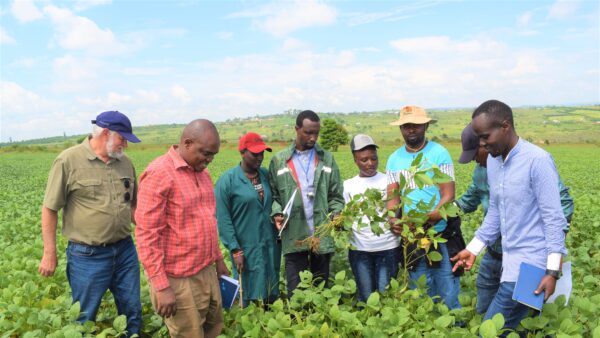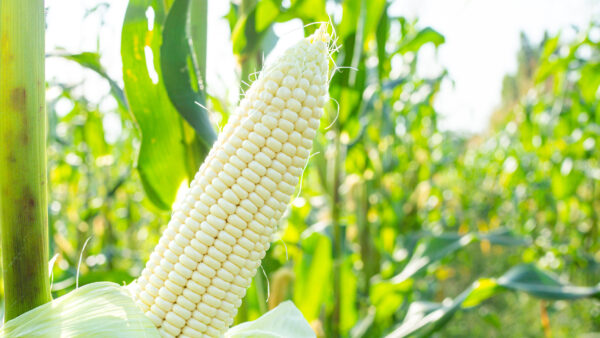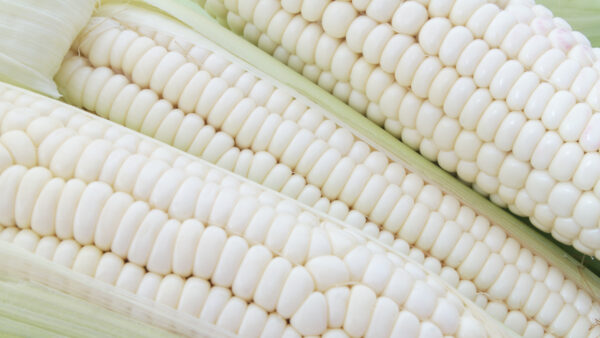The Prairie Grain Development Committee marked some major milestones this year, including the first durum with intermediate FHB resistance.
While reference genome work in barley has been happening at the international level for the past decade, it wasn’t until 2019 that this research was carried out in Canada.
In less than a year (an extremely short period of time in this field of study), the Canadian team was able to sequence and assemble the first reference genome of a Canadian barley cultivar — AAC Synergy.
“Assembling big genomes like the barley genome — which is almost twice the human genome’s size — isn’t easy,” says Ana Badea, barley breeder at the Agriculture and Agri-Food Canada (AAFC) Brandon Research and Development Centre in Manitoba.
“Since we’ve just completed putting together the ‘puzzle pieces’ or ‘building blocks’ of the AAC Synergy genome, we’re now about to embark on the second part of our endeavor, which is exploring its gene content.”
The decoding of AAC Synergy — an AAFC developed malting barley variety licenced to Syngenta Canada — is significant. AAC Synergy helped set a new yield standard for two-row malt barley in Western Canada. It offers a favourable quality profile that includes relatively low protein with high plump, high extract and low beta-glucan levels, complementing a good foliar disease package. And knowing exactly what its genome looks like could help breeders in the variety development process, says Badea.
Milestones like this were on the minds of many at this year’s meeting of the Prairie Grain Development Committee (PGDC) in February which, like just about every other agriculture event over the past 12 months, took place virtually.
Despite happening via Zoom and being pared back a bit (there was no plenary session this year), the group once again got together to put forward for registration a new suite of lines that could become the next generation of pulse and cereal crops in Canada.
Decoding Barley
The research work to decode the barley genome is a first of its kind in barley in Canada and is part of the five-year project Targeted and Useful Genomics for Barley and Oat, also known as TUGBOAT.
“Since AAC Synergy is a high-yielding malting barley, traits such as yield and malt quality will be investigated. For example, enabling Canadian breeders to have the ability to make selections for malting quality at early stages in the breeding program could significantly increase the chances that good malting breeding lines will enter the Western Cooperative Barley Registration Test and Collaborative Malting Barley Trial,” Badea said.
She notes that in Western Canada, for a new barley variety to be designated as a malting variety, rigorous test criteria must be met.
“This new resource will enable breeders to control the breeding process better and increase the development of improved varieties to benefit Canadian farmers and end-users.”
That, of course, is what PGDC is all about. In total, the Prairie Recommending Committee for Oat and Barley (PRCOB) looked at 12 lines this year — three oats and nine barleys. Of the oat lines two were supported for registration, while eight of nine barley candidates were supported.
While the pandemic did challenge breeders, PRCOB chair Kelly Turkington says that the committee managed to acquire a virtually full set of data to put forth its registration recommendations.
From a pathology point of view and solely in terms of disease resistance, a number of the second-year two-row co-op entries were a little more on the susceptible side of things for loose smut, Turkington said.
“I recognize it isn’t a priority one disease, but nine of the 12 second-year entries had moderately susceptible to susceptible reactions. In terms of the first-year entries, 14 of 33 entries had moderately susceptible to susceptible. Compare this to the surface smuts (covered and false smut) where I think most of the second- and first-year entries had moderately resistant to resistant reactions.”
Badea and her team did not come empty-handed to this year’s PGDC meeting. They brought forward four new barley candidate lines: TR13235, TR18257, TR18258 and TR19268. Out of those, the first three are malting, and the fourth one is intended for general purpose/feed. All these lines could potentially be the answers to some of the common requests from growers and end users, like high yield or good quality attributes, Badea said.
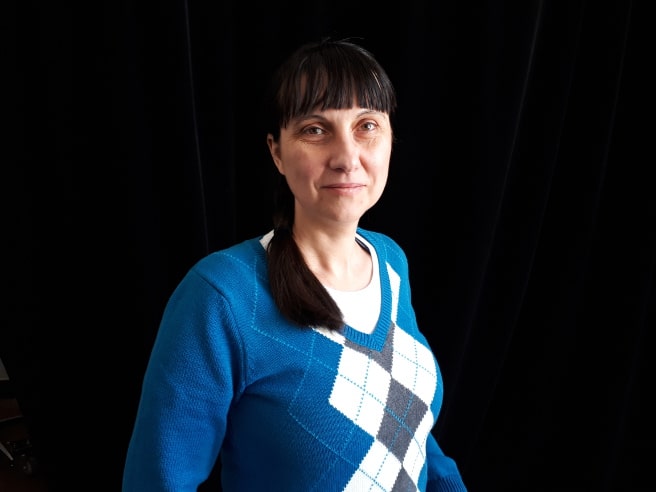
Major Development in Durum
On the wheat side, the Prairie Recommending Committee for Wheat, Rye and Triticale (PRCWRT) put forward 17 lines for registration this year. Among them was a new durum from Yuefeng Ruan of AAFC Swift Current, whose line DT2009 is the first durum wheat line with intermediate resistance to fusarium head blight (FHB).
He worked on the line for eight years before bringing it forward for recommendation this year.
“It’s a lot of work screening for FHB in the nursery every year during the summer. We look at over 10,000 lines every year,” Ruan said. “Really a lot goes into it, so to have a line like this put forward for registration is very gratifying.”
DT2009 is a combination of high yield with high wheat protein and semolina protein concentrations equal to Strongfield. It has strong straw strength and medium plant height and has resistance to moderate resistance to all rusts including Ug99 stem rust.
AAFC Lethbridge’s Rob Graf, who in 2020 won the Canadian Plant Breeding & Genetics Award, put forward a new line as well this year. W601 winter wheat, if registered, will be a worthy competitor to AAC Wildfire, he said. With good winter hardiness, it’s a medium to short variety with excellent straw strength. Resistant to all three rusts, it has intermediate resistance to FHB.
He notes that it has particularly good flour yield and low flour ash — something end users are looking for.
“It’s probably the highest yielding winter wheat I’ve ever registered,” he said.
According to PRCWRT chair Dana Maxwell, there were no Canada Northern Hard Red (CNHR) lines put forward this year.
She said the PRCWRT continues to evolve and hone its procedures. In recent years the committee has implemented an assessment tool (created in large part by Graf) which allows breeders who planned to put new lines forward for recommendation to run those lines through the tool, which told them whether or not the line was likely to be recommended for registration or would need to be discussed in more detail by the committee.
“In the last 10 years, even I’ve seen a lot of evolution of this committee. We all have a better understanding of what the expectations are on the quality team,” Maxwell said.
“We’ve been flexible in how we handle different requests, how we look at things like forage wheat, how we look at, or whether we look at, U.S. data. We have parameters on what kind of us data we look at now. Over the last decade we’ve exhibited a lot of flexibility and willingness to be flexible and consider different ideas, and I wish more people understood that.”

Vicine and Protein
The Prairie Recommending Committee for Pulses and Special Crops (PRCPSC) put forth a total of 18 lines this year for registration — seven dry bean lines, three lentil lines, four pea lines and four faba bean lines.
This was the first year that breeders of faba beans must prove that their faba bean line contains low vicine levels in order to enter into faba bean trials. Vicine — and a related compound called convicine — is an alkaloid found in faba beans that is toxic to people who, due to genetic factors, lack an enzyme called glucose-6-phosphate dehydrogenase. Consuming vicine and convicine in high quantities can cause anemia in these individuals.
“Low vicine is still a big agenda item as we move down that road. How do we economically measure vicine content? What are our standards going to be? How do we designate check varieties for our field testing that best represent the crop in the process of looking at new potential check varieties in the low vicine category?” said PRCPSC chair Glen Hawkins.
“Obviously it doesn’t happen overnight, and there are lots of different opinions of priority too. It’s a matter of finding common ground with everybody and moving forward. We don’t want to put ourselves in a position where we can’t succeed.”
In the next five to seven years, Canada’s faba bean acreage on the Prairies will hopefully consist of 100 per cent low vicine lines, Hawkins said. It’s the kind of big picture thinking that’s becoming more prevalent as the agricultural industry in Canada looks to become even more competitive on a global scale.
Also this year, the committee had what was likely its best suite of pea candidates pushing performance both in yield and in protein content, Hawkins noted. As end use demand for pulse protein rises with the construction of new processing plants in provinces like Manitoba, both yield and protein are important in order to satisfy both growers and processors.
“Growers don’t get paid for protein; they get paid for yield. If there’s no premium paid on protein, then breeders have to ensure their line delivers on both fronts,” Hawkins added.








